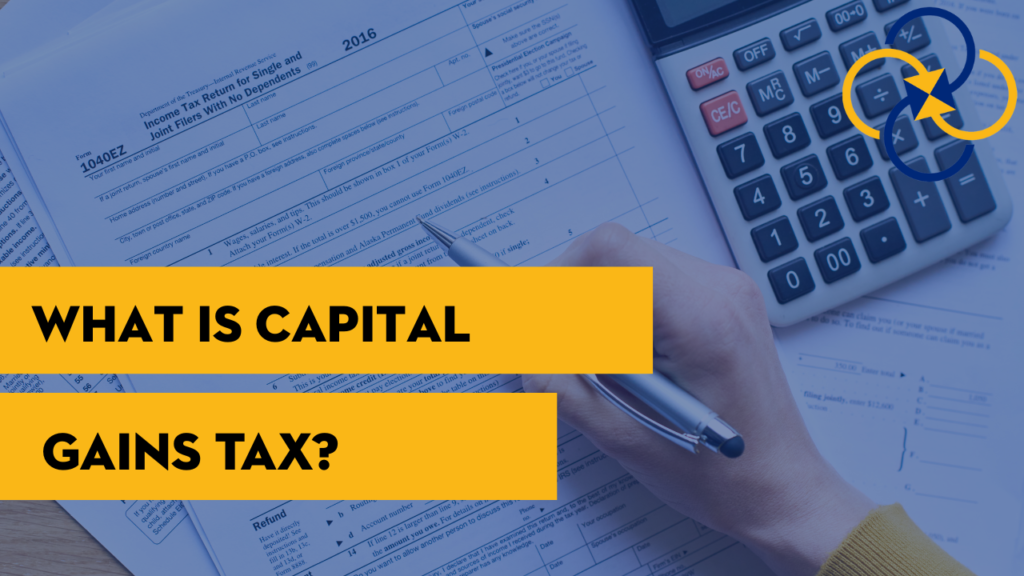Capital gains tax is a tax imposed on the profit made from the sale of an asset, such as stocks, real estate, bonds, or other investments. When an individual sells an asset for more than what they paid for it, the difference between the selling price and the purchase price is considered a capital gain, which may be subject to taxation. Understanding how capital gains tax works, the different types of capital gains, and strategies to minimize tax liability is crucial for investors, homeowners, and anyone who buys and sells assets. This article explores the nature of capital gains tax, its mechanics, and ways to manage your tax liability effectively.
How Does Capital Gains Tax Work?
When you sell an asset for more than its original purchase price, the profit is termed a capital gain. The government taxes this gain based on how long you held the asset and your income level. The purchase price, also known as the cost basis, is the amount you originally paid for the asset, and the sale price is the amount you receive when selling it. The capital gain is the difference between the sale price and the cost basis. Only the profit is taxed, not the full sale price. For example, if you purchase 100 shares of stock at $10 each and later sell them for $15 each, your capital gain would be $500 (100 shares x $5 gain per share), and that $500 would be subject to capital gains tax.
Types of Capital Gains
There are two primary types of capital gains: short-term and long-term, with each type being taxed at different rates. Short-term capital gains arise from assets held for one year or less. These gains are taxed at a higher rate, usually equivalent to your ordinary income tax rate, which includes wages and other regular income. Long-term capital gains, on the other hand, come from assets held for more than a year and are typically taxed at a lower rate, encouraging investors to hold their assets longer. The tax rates for short-term capital gains range from 10% to 37%, depending on your income, while long-term capital gains are taxed at more favorable rates, ranging from 0% to 20%, depending on your income level.
Capital Gains Tax Rates
Capital gains tax rates vary based on your income level and the length of time you held the asset. In the U.S., long-term capital gains are generally taxed at lower rates than short-term capital gains. For 2023, individuals with taxable income up to $44,625 (single) or $89,250 (married filing jointly) pay 0% on long-term capital gains. Those with income between $44,626 and $492,300 (single) or $89,251 and $553,850 (married filing jointly) pay 15%, while individuals earning above these thresholds pay 20%. Short-term capital gains are taxed at ordinary income tax rates, which can be as high as 37%, depending on your overall taxable income. Additionally, certain capital gains may be subject to additional taxes, such as the net investment income tax (NIIT), which adds a 3.8% tax on certain investment income for high-income earners.
Exemptions and Special Rules
There are exceptions and special rules that apply to specific assets. For instance, gains from the sale of a primary residence may be excluded from capital gains tax, provided certain conditions are met. If you’ve lived in the home for at least two of the last five years, you can exclude up to $250,000 of capital gains ($500,000 for married couples). Similarly, the sale of collectibles, such as art, antiques, or rare coins, is taxed at a higher rate, generally 28%. Qualified small business stock may also qualify for an exclusion of up to 100% of capital gains, depending on specific criteria. Furthermore, investments held in tax-advantaged accounts like IRAs or 401(k)s may defer or entirely avoid capital gains taxes until funds are withdrawn.
Strategies to Minimize Capital Gains Tax
Several strategies can help reduce or defer capital gains tax liability. One common approach is to hold assets for longer than one year, which qualifies them for the lower long-term capital gains tax rates. Another strategy, known as tax-loss harvesting, involves selling assets at a loss to offset gains from other investments, reducing your overall tax burden. Utilizing tax-advantaged accounts, such as IRAs or 401(k)s, can also help defer capital gains tax until retirement. You can also gift appreciated assets to family members in lower tax brackets, who may pay a lower capital gains tax on the sale. Finally, investing in qualified Opportunity Zones may allow you to defer or even exclude capital gains tax on certain investments, provided you meet specific requirements.
Conclusion
Capital gains tax is an essential consideration for anyone who buys and sells assets, such as real estate, stocks, or bonds. It is levied on the profit from the sale of these assets, and the tax rate depends on how long the asset was held and the seller’s income level. While capital gains tax can significantly affect your returns, understanding the various types of capital gains, tax rates, and strategies to minimize tax liability can help you make informed financial decisions. By holding assets long-term, offsetting gains with losses, and using tax-advantaged accounts, you can effectively manage your capital gains tax and maximize your after-tax returns. As always, consulting a tax professional or financial advisor is advisable to tailor a strategy to your personal financial situation.
Market Investment Group, LLC is a registered investment adviser that only conducts business in jurisdictions where it is properly registered, or is excluded or exempted from registration requirements. Registration is not an endorsement of the firm by securities regulators and does not mean the adviser has achieved a specific level of skill or ability. The firm is not engaged in the practice of law or accounting. Market Investment Group, LLC reserves the right to edit blog entries and delete comments that contain offensive or inappropriate language. Comments that potentially violate securities laws and regulations will also be deleted. The information presented is believed to be factual and up-to-date, but we do not guarantee its accuracy and it should not be regarded as a complete analysis of any topics discussed. All expressions of opinion reflect the judgment of the authors on the date of the post and are subject to change. A professional adviser should be consulted before making any investment decisions. Content should not be viewed as personalized investment advice, as an offer to buy or sell any of the securities discussed, or as legal or tax advice. Always consult an attorney or tax professional regarding your specific legal or tax situation. All investments and strategies have the potential for profit or loss. Different types of investments involve higher and lower levels of risk. There is no guarantee that a specific investment or strategy will be suitable or profitable for an investor’s portfolio. There are no assurances that an investor’s portfolio will match or exceed a specific benchmark. Historical performance returns for investment indexes and/or categories usually do not deduct transaction and/or custodial charges, or advisory fees, which would decrease historical performance results. Hyperlinks on this blog are provided as a convenience. We cannot be held responsible for information, services, or products found on websites linked to our posts. Annuity and life insurance guarantees are subject to the claims-paying ability of the issuing insurance company. If you withdraw money from or surrender your contract within a certain time after investing, the insurance company may assess a surrender charge. Withdrawals may be subject to tax penalties and income taxes. Persons selling annuities and other insurance products receive compensation for these transactions. These commissions are separate and distinct from fees charged for advisory services. Insurance products also contain additional fees and expenses. Social Security rules and regulations are subject to change at any time. Always consult with your local Social Security office before acting upon any information provided herein. Alternative Investments are not suitable for all investors and present a higher level of risk than traditional investments.





